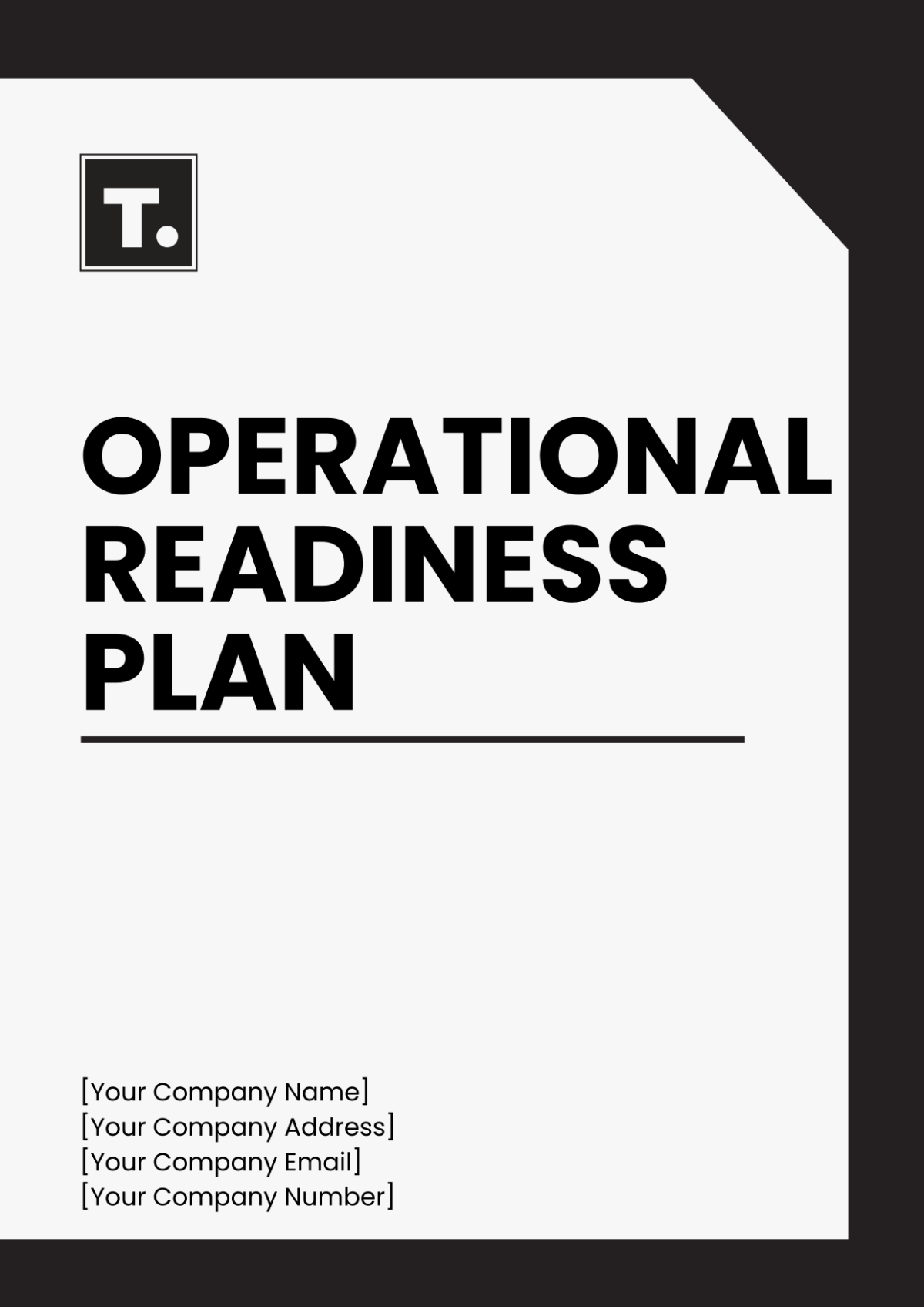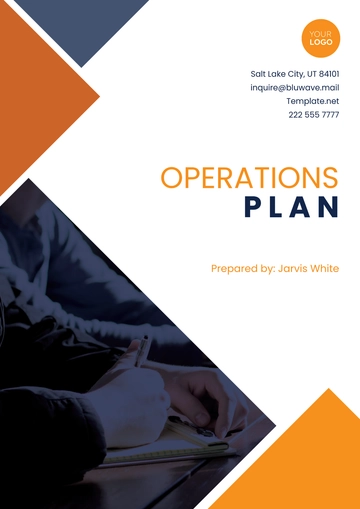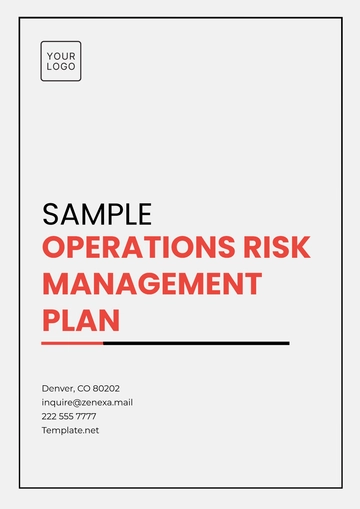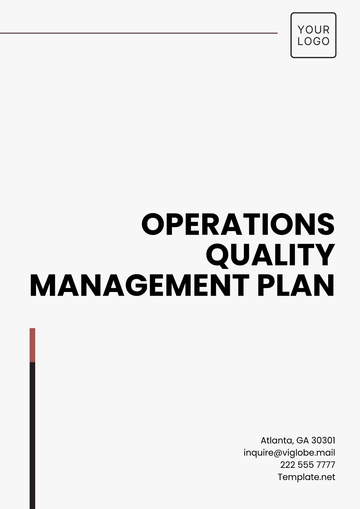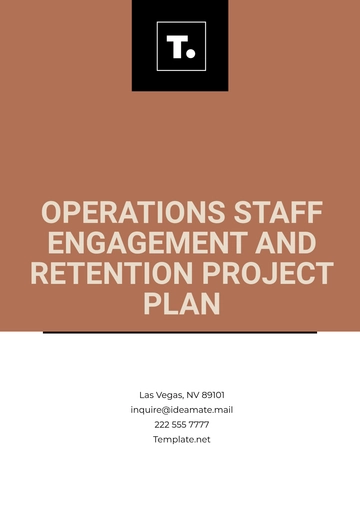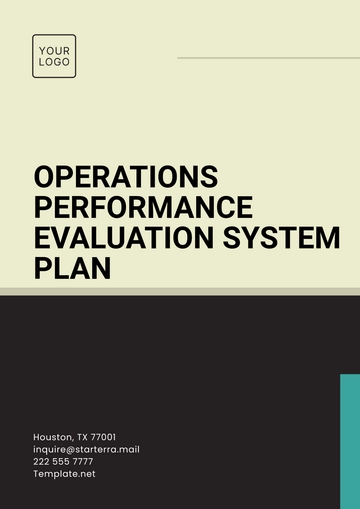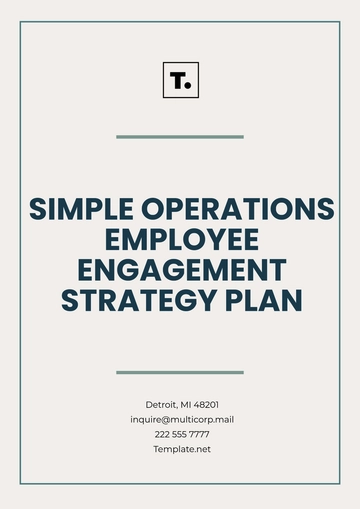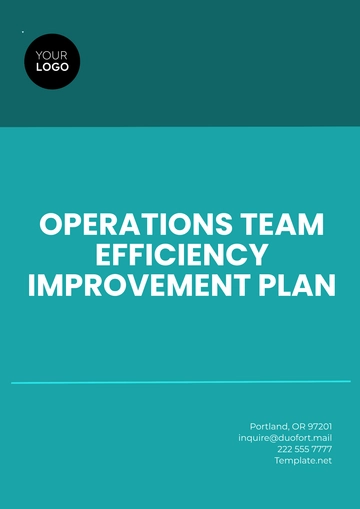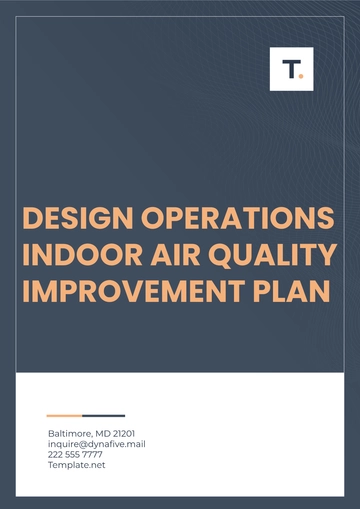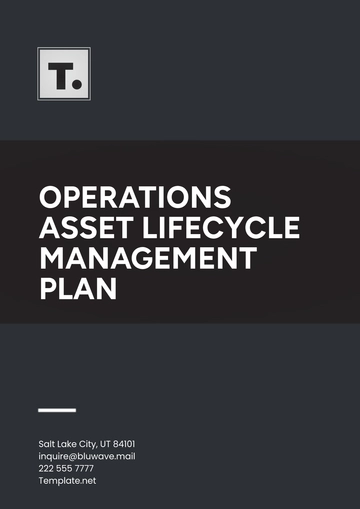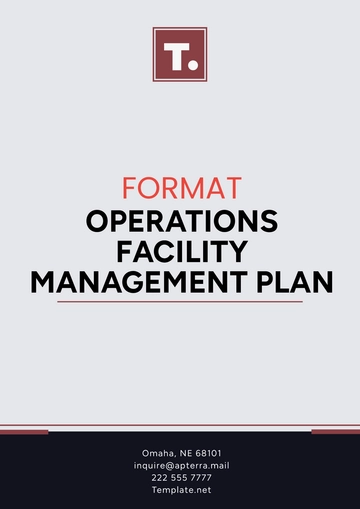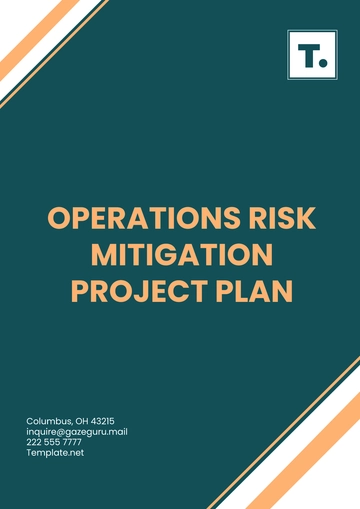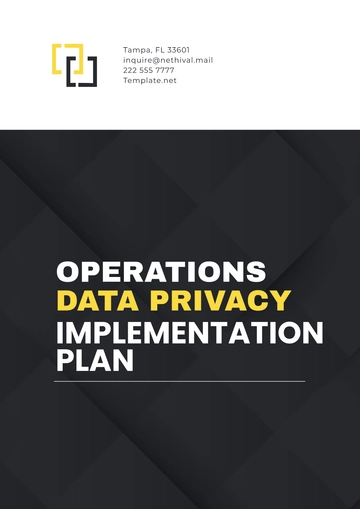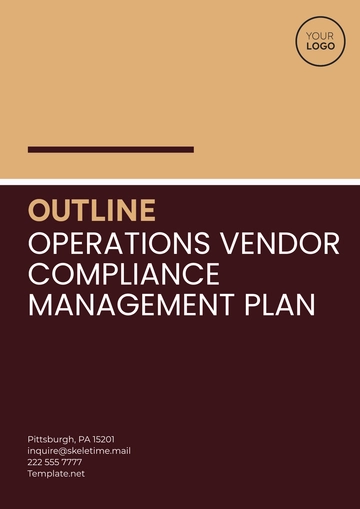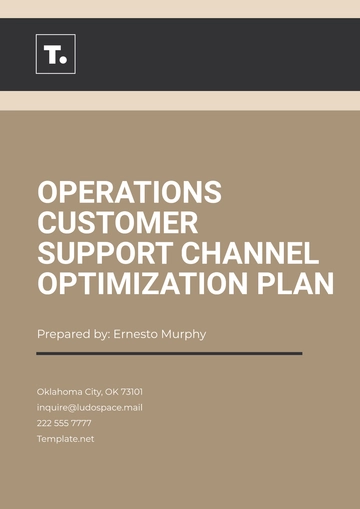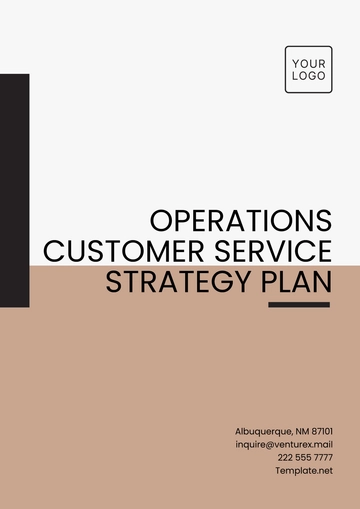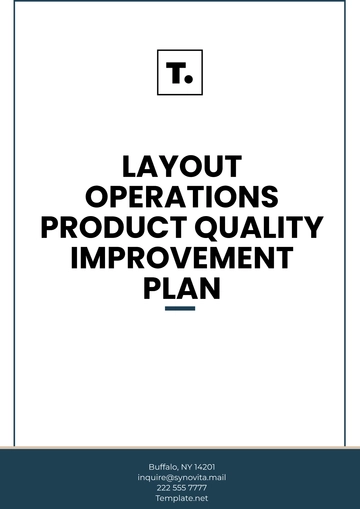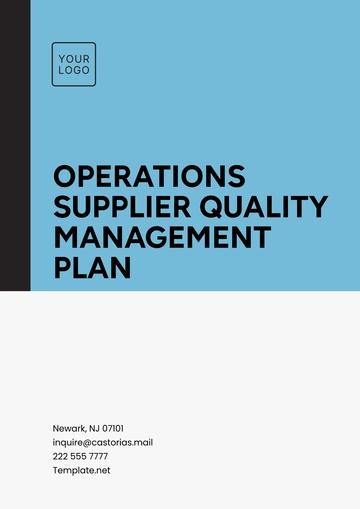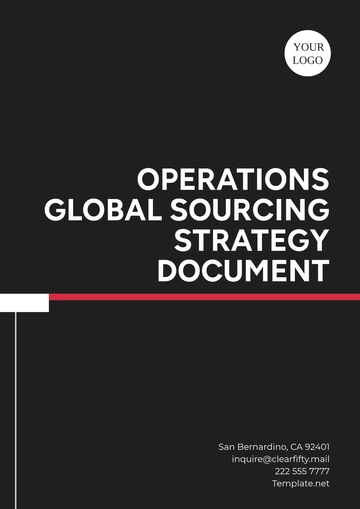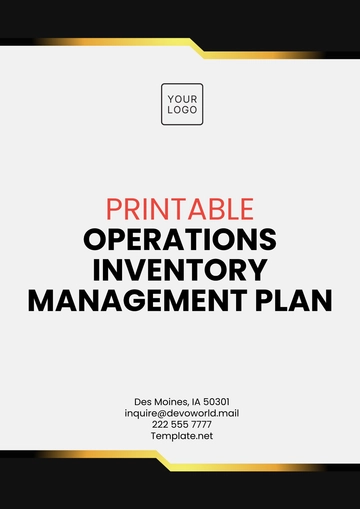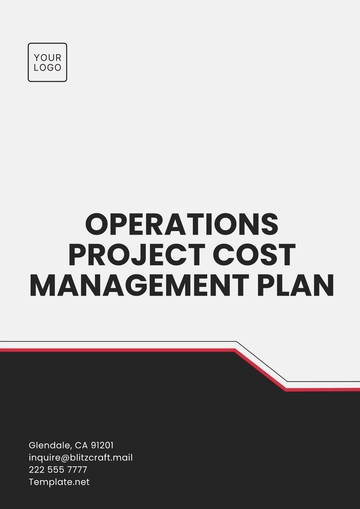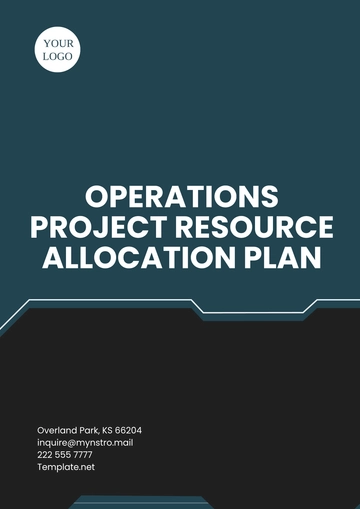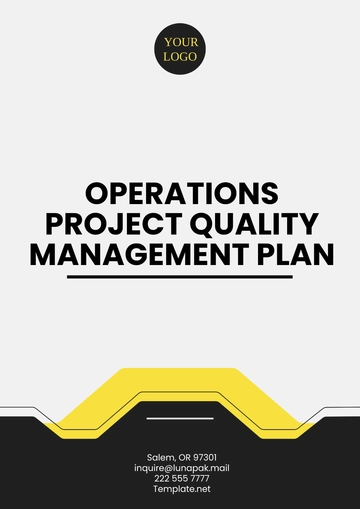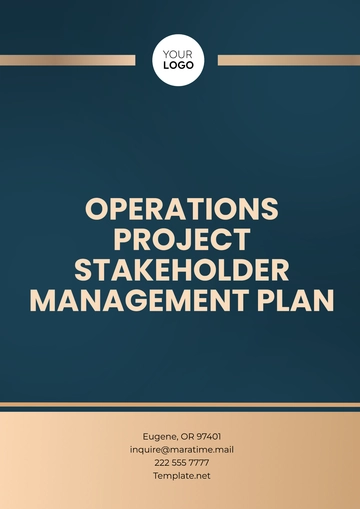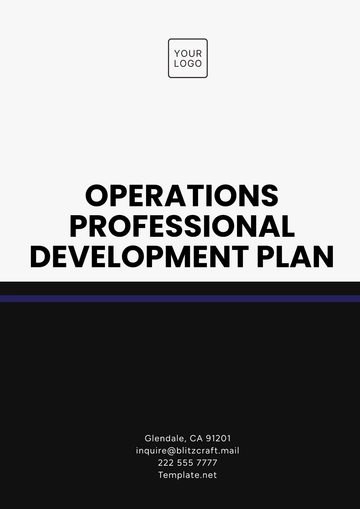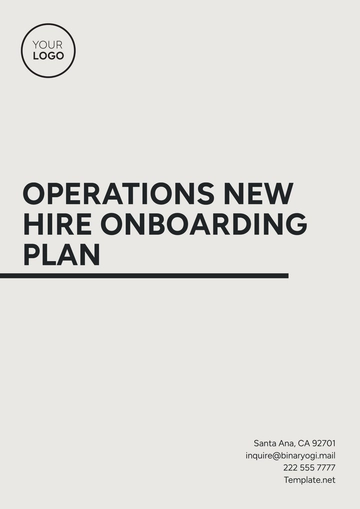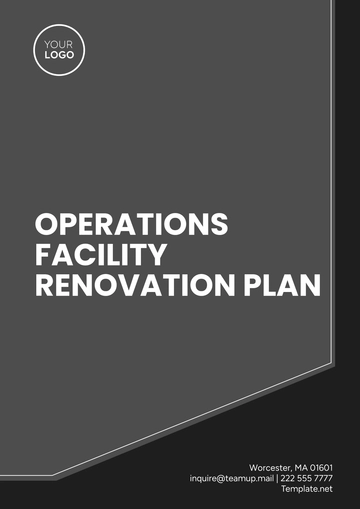Operational Readiness Plan
I. Introduction
The Operational Readiness Plan (ORP) outlines the preparations necessary to ensure all systems, processes, and personnel are fully prepared to support the operational requirements.
II. Project Overview
The Operational Readiness Plan (ORP) is designed to ensure a smooth transition and successful implementation of the new customer relationship management (CRM) system. This CRM system, named "CRMPro," is aimed at streamlining sales processes, improving customer service, and enhancing overall operational efficiency. The implementation of CRMPro is a strategic initiative undertaken by the Sales and Marketing department in response to the growing demand for personalized customer experiences and the need to centralize customer data for better insights and decision-making. With CRMPro anticipates achieving higher customer satisfaction, increased sales revenue, and improved operational performance.
III. Stakeholder Analysis
A. Key Stakeholders
[Project Manager]: Role - Oversees project implementation.
[Department Heads]: Role - Ensure departmental readiness.
[IT Manager]: Role - Manages system integration and IT readiness.
B. Responsibilities
[Project Manager]: Coordinate readiness activities and report progress.
[Department Heads]: Ensure staff training and readiness within their departments.
[IT Manager]: Ensure technical readiness and system integration.
IV. Readiness Criteria
A. Operational Metrics
System Uptime: Ensure minimum uptime of 99.9%.
Response Time: Maintain average response time under 2 seconds.
Data Accuracy: Achieve 99.5% accuracy in data processing.
B. Performance Standards
Customer Satisfaction: Maintain a customer satisfaction rating above 90%.
Employee Training: Ensure 100% completion of required training modules.
Compliance: Adhere to all regulatory requirements and standards.
V. Preparatory Tasks
A. Infrastructure Preparation
Upgrade Server Capacity: Increase server capacity to handle increased workload.
Network Optimization: Ensure network bandwidth meets operational requirements.
Backup and Recovery: Implement robust backup and recovery solutions.
B. Personnel Training
CRM Training: Provide comprehensive training on CRM usage to all staff members.
Customer Service Training: Conduct specialized customer service training for frontline staff.
Data Security Training: Train staff on data security protocols and procedures.
VI. Testing and Validation
A. System Testing
Functionality Testing: Test all CRM functions to ensure proper functionality.
Integration Testing: Validate integration with existing systems.
Performance Testing: Assess system performance under peak loads.
B. Personnel Readiness
Scenario Training: Conduct role-playing exercises to simulate real-world scenarios.
Skills Assessment: Assess staff members' proficiency in using the CRM system.
Feedback Collection: Gather feedback from staff on system usability and functionality.
VII. Communication Plan
A. Stakeholder Communication
Regular Meetings: Schedule weekly meetings with key stakeholders to provide updates.
Email Updates: Send regular email updates on readiness progress.
Open Door Policy: Encourage open communication for addressing concerns.
B. Progress Updates
Weekly Reports: Provide detailed weekly progress reports to project stakeholders.
Dashboard: Implement a dashboard for real-time visibility into readiness status.
Surveys: Conduct surveys to gather feedback on communication effectiveness.
VIII. Risk Management
A. Risk Identification
Data Breach: Risk of potential data breaches due to system vulnerabilities.
Training Deficiency: Risk of staff members not adequately trained on system usage.
Integration Issues: Risk of integration issues with existing systems.
B. Mitigation Strategies
Enhanced Security Measures: Implement additional security protocols to mitigate data breach risk.
Comprehensive Training Plan: Develop a comprehensive training plan to ensure staff readiness.
Pilot Testing: Conduct pilot testing to identify and resolve integration issues.
IX. Go/No-Go Decision Criteria
A. Readiness Assessment
Operational Metrics: Ensure all readiness criteria are met.
Stakeholder Feedback: Gather feedback from stakeholders on readiness status.
Risk Assessment: Assess risks and mitigation strategies.
B. Decision Process
Consensus Decision: Reach consensus among key stakeholders on readiness status.
Review Meeting: Conduct a final review meeting to assess readiness and make the decision.
Contingency Planning: Develop contingency plans for potential issues post-implementation.
X. Contingency Plans
A. Contingency Scenarios
System Outage: Develop a plan for managing operations in the event of a system outage.
Data Loss: Implement backup and recovery procedures for data loss scenarios.
Staff Shortage: Develop a plan for managing operations with reduced staff capacity.
B. Response Strategies
Backup Systems: Implement backup systems to minimize downtime in case of system failure.
Data Recovery Protocols: Establish protocols for data recovery in case of data loss.
Cross-Training: Cross-train staff members to ensure continuity of operations during staff shortages.
XI. Post-Implementation Review
A. Evaluation Criteria
Operational Performance: Assess system performance post-implementation.
Customer Feedback: Gather feedback from customers on system usability and effectiveness.
Staff Feedback: Gather feedback from staff on training effectiveness and system usability.
B. Lessons Learned
Identify Successes: Identify successful aspects of the implementation process.
Areas for Improvement: Identify areas for improvement and develop action plans.
Documentation: Document lessons learned for future reference and improvement.
XII. Financial Projections
Metric | Year 2050 | Year 2051 | Year 2052 |
|---|
Revenue | $10,000,000 | $12,000,000 | $14,000,000 |
Expenses | $7,000,000 | $8,000,000 | $9,000,000 |
Net Income | $3,000,000 | $4,000,000 | $5,000,000 |
XIII. SWOT Analysis
Strengths | Weaknesses | Opportunities | Threats |
|---|
Strong Leadership | Limited Budget | Market Growth | Technological Disruption |
Skilled Workforce | Legacy Systems | New Partnerships | Economic Downturn |
Established Brand | Resistance to Change | Emerging Markets | Cybersecurity Risks |
Plan Templates @ Template.net
